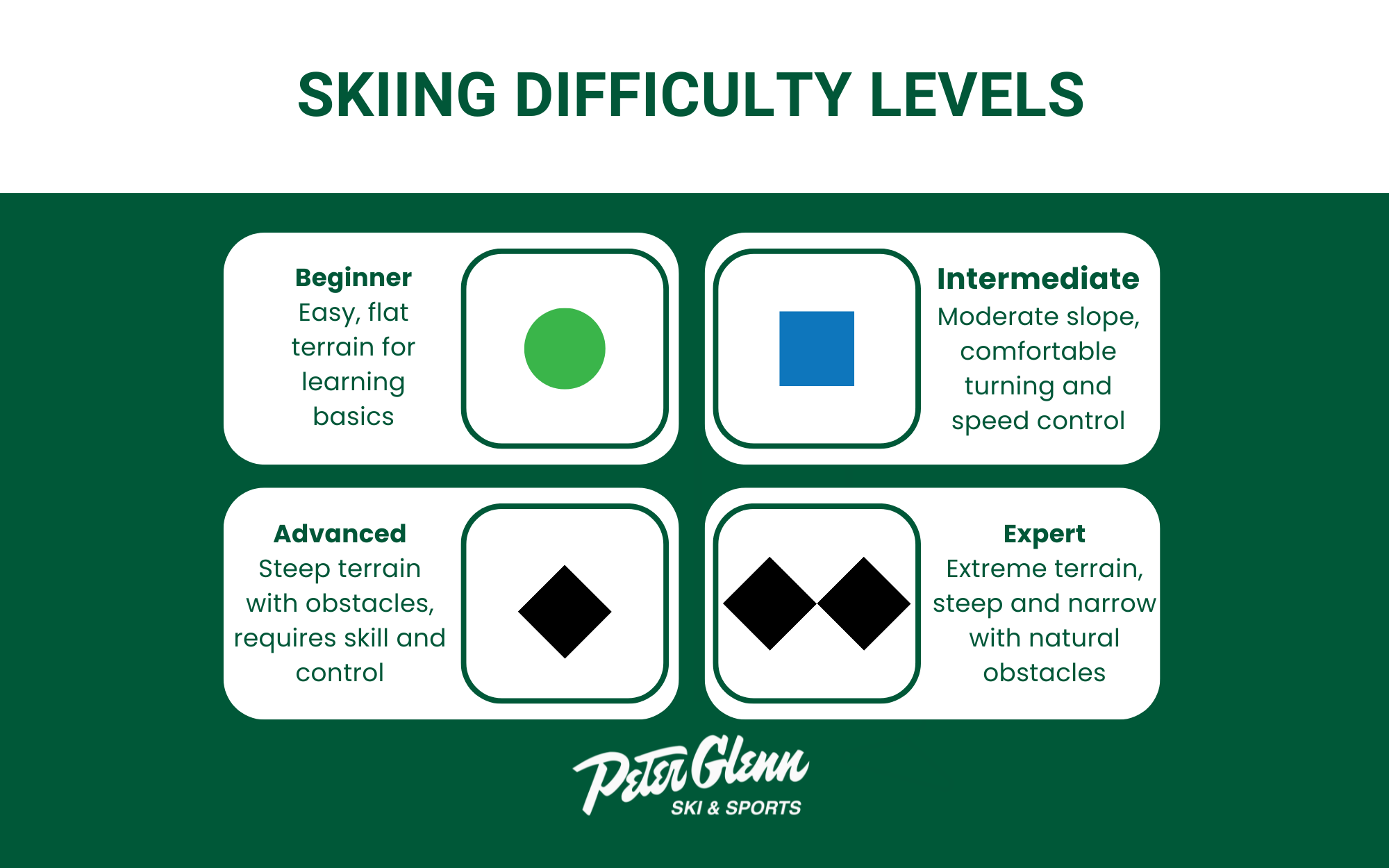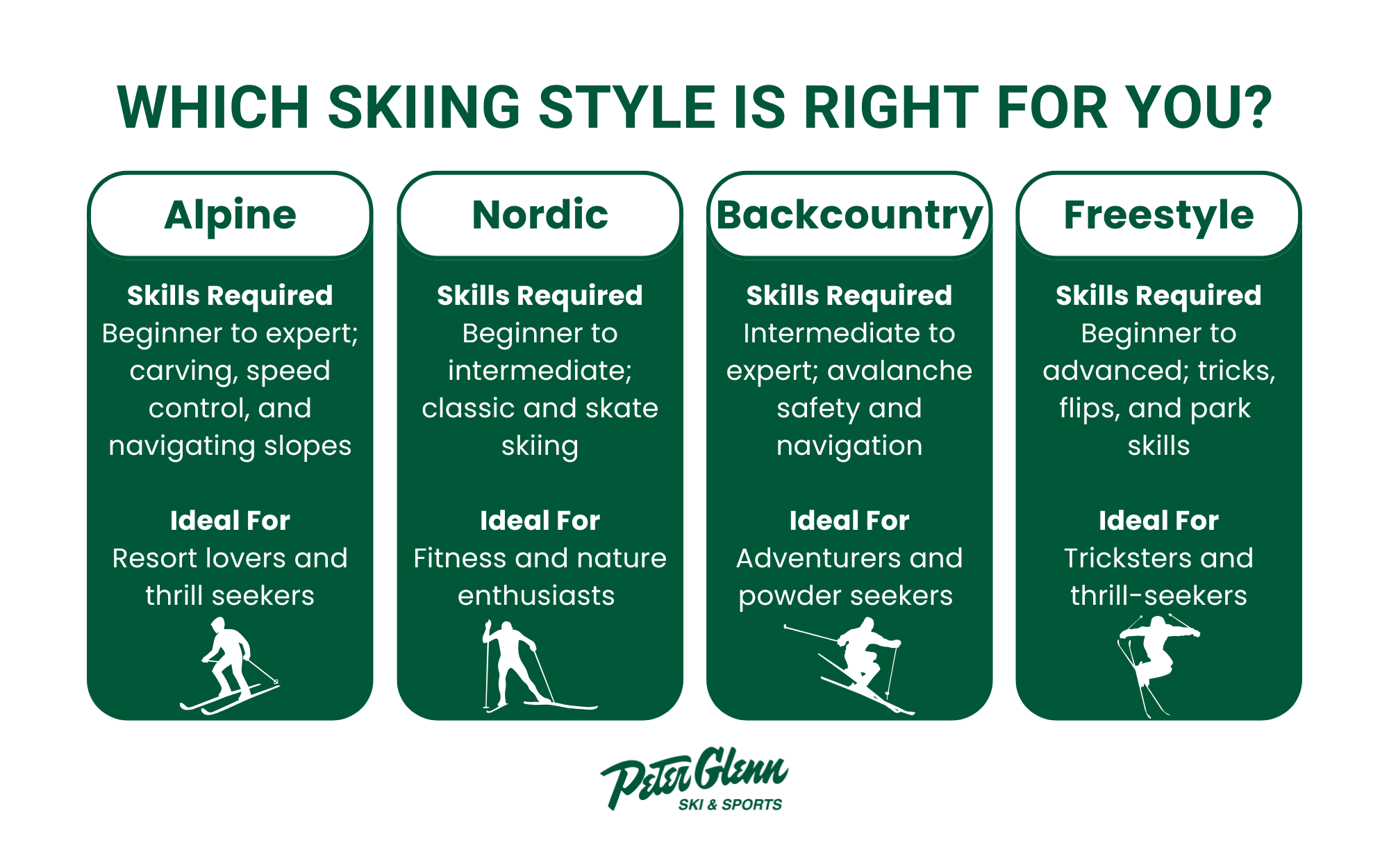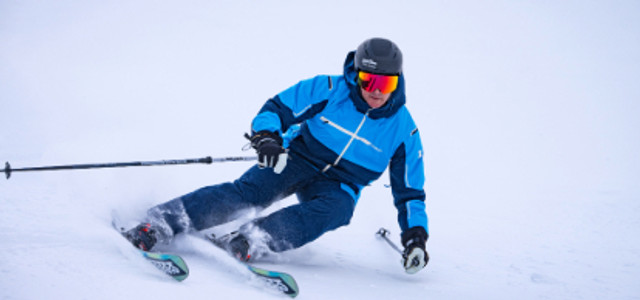Types of Skiing: A Complete Guide to Finding Your Style
Posted by Peter Glenn Staff on Oct 16th 2025
Table of Contents
The Short Answer: Skiing comes in four main types: Alpine (downhill), Nordic (cross-country), Backcountry, and Freestyle. Each offers a unique experience, from groomed resort slopes to untouched powder in the wilderness.
Skiing has become one of the most popular winter activities, attracting millions to snow-covered mountains each season. Whether you're a first-time skier or a seasoned pro, understanding the different types of skiing helps you choose the best path for your skills and interests.
Alpine Skiing: The Resort Classic
What is Alpine Skiing?
Alpine skiing, also known as downhill skiing, is the most common form of the sport. Skiers ride lifts to the top of groomed slopes and then glide down at varying speeds, from easy, beginner-friendly hills to more challenging expert runs. Popular locations include resorts in Colorado, Utah, Vermont, and California, offering terrain for all skill levels.
Alpine skiing is the go-to choice for those seeking an exciting, yet controlled experience. The ease of lift-accessed runs combined with the variety of terrain makes it an ideal option for anyone looking to spend a day at a ski resort.
Techniques and Skills
For beginners, the first skill learned is the snowplough technique, used to control speed and stop. As you progress, you’ll learn parallel skiing, where both skis remain aligned as you navigate turns. Advanced skiers move on to carving, a technique that involves making aggressive turns at high speeds by cutting precise arcs with ski edges. Mastering these techniques helps skiers advance from beginner runs to more challenging black diamond and double black diamond trails.
- Carving: Making aggressive turns at high speeds by cutting precise arcs with your ski edges.
- Parallel turns: Keeping skis aligned while changing direction.
- Speed control: Managing velocity on steeper slopes.
Equipment Needed
Alpine skiing requires specific gear tailored to the demands of downhill terrain:
- Downhill skis designed for turning and speed control
- Rigid ski boots that lock your heel in place
- Bindings that release during falls to prevent injury
- Poles for balance and rhythm
- Helmet and goggles for safety
This gear is specifically engineered to offer the control, comfort, and safety needed for fast-paced runs on groomed slopes.
Difficulty Levels
Most ski resorts use a color-coded system to mark the difficulty of trails. Beginners start on green circles, which are easy and gentle. Blue squares are for intermediate skiers, offering slightly steeper and more challenging terrain. Black diamonds represent advanced trails, and double black diamonds are for expert skiers only, with difficult conditions that require precise skill.

Nordic Skiing: The Original Form
Cross-Country Basics
Nordic skiing, or cross-country skiing, is a form of skiing that takes place on relatively flat or rolling terrain. Unlike Alpine skiing, Nordic skiers are not racing downhill but instead glide across flat landscapes or gentle slopes. Popular in national and state parks, Nordic skiing is accessible and offers a peaceful experience.
The two main techniques for Nordic skiing are:
- Classic skiing: Involves a straightforward forward-and-back motion on groomed tracks. This technique is easier for beginners.
- Skate skiing: Mimics ice skating movements and allows for faster speeds. It’s more complex, requiring coordination and strength.
Equipment Differences
Unlike alpine skis, Nordic skis are longer, narrower, and lighter. The ski boots attach only at the toe, leaving your heel free to lift. This setup allows for a more natural walking motion, and the poles are longer to help propel you forward.
- Nordic skis: Longer and narrower than alpine skis
- Boots: Attaching only at the toe, leaving the heel free for movement
- Poles: Longer for more power with each stride
- Lightweight gear: Making it easier to transport
Benefits and Appeal
Cross-country skiing is known for being a full-body workout that engages both the upper and lower body. It’s a low-impact activity, making it ideal for those with joint concerns. As one of the most efficient cardiovascular exercises, Nordic skiing burns more calories than most other forms of winter recreation. It also offers more affordability than alpine skiing, as you don’t need lift tickets, and the gear is typically less expensive.
Many public lands and parks maintain groomed trails specifically for Nordic skiers during winter months, making it accessible for everyone.
Popular Nordic Activities
Beyond just recreational skiing, competitive cross-country racing attracts serious athletes, with events ranging from short sprints to long marathon distances. In addition, many communities host citizen races that provide skiers of all abilities the chance to compete in a fun and inclusive environment.
Backcountry Skiing: Off-Piste Adventure
Understanding Backcountry
Backcountry skiing, also known as off-piste skiing, takes you beyond the boundaries of ski resorts into natural, unpatrolled wilderness. Backcountry skiers search for fresh, untouched powder and natural terrain. It’s a thrilling type of skiing, offering unmatched solitude and the experience of being truly immersed in nature.
However, backcountry skiing requires preparation, knowledge, and proper equipment due to the challenges of unmarked trails and the risks posed by avalanches.
Required Skills
Before venturing into the backcountry, you should have solid skills in skiing on varied terrain. Navigational skills are essential, as the terrain isn’t marked, and routes are not mapped out. Weather conditions can change rapidly, so backcountry skiers need to monitor the forecast closely.
- Avalanche safety: Understanding avalanche risks and having proper safety training is crucial. Many backcountry skiers take avalanche courses before their first trip.
- Navigational skills: Backcountry skiers must be prepared to read terrain and navigate without trails or resort maps.
Planning and Preparation
Every backcountry trip requires careful planning. Always check the avalanche forecast, study your route, and have a backup plan. Travel with experienced partners and start with shorter, less risky routes to gain experience.
Freestyle Skiing: Creative Expression
Types of Freestyle
Freestyle skiing emphasizes creativity, aerial maneuvers, and tricks. It includes a variety of disciplines such as:
- Park skiing: Skiing in terrain parks with features like jumps, rails, and boxes
- Mogul skiing: Skiing through bumpy terrain while incorporating tricks
- Big air and slopestyle: Competitive disciplines that feature massive jumps and technical skills
Freestyle skiing is perfect for those who enjoy pushing their limits and expressing their style on the slopes.
Technical Elements
Freestyle skiers progress through various tricks, starting with basic jumps and spins. More advanced tricks include flips, rotations, and combinations that challenge gravity. These tricks are usually practiced on trampolines or foam pits before hitting the snow to build confidence and minimize injury risks.
Equipment Considerations
Twin-tip skis are essential for freestyle skiing, allowing skiers to land backward and ski in both directions. Safety is paramount in freestyle skiing, with protective gear such as helmets, padded shorts, and wrist guards being critical for injury prevention.
Learning Progression
Start in small terrain parks with basic features and gradually work your way up to more complex maneuvers. Many resorts offer freestyle camps that provide a structured, safer learning environment.

Ready to Hit the Slopes?
Each type of skiing offers something unique. Alpine skiing provides accessible thrills at ski resorts with reliable conditions. Nordic skiing offers a peaceful workout in beautiful settings. Backcountry skiing delivers fresh snow and adventure for those willing to put in the effort. Freestyle skiing lets skiers express themselves through tricks and style.
Your ideal skiing style depends on your fitness level, sense of adventure, and goals. Many skiers enjoy mixing multiple disciplines, combining resort days with backcountry trips or park laps.
Ready to get started? Visit Peter Glenn for expert guidance on ski gear tailored to your chosen style. Whether you're shopping for skis, jackets, helmets, or goggles, we’ve got you covered.



